Art & Exhibitions
Tuned Up Chrysler Museum Shines in Virginia
The institution reopened this month with two new wings.
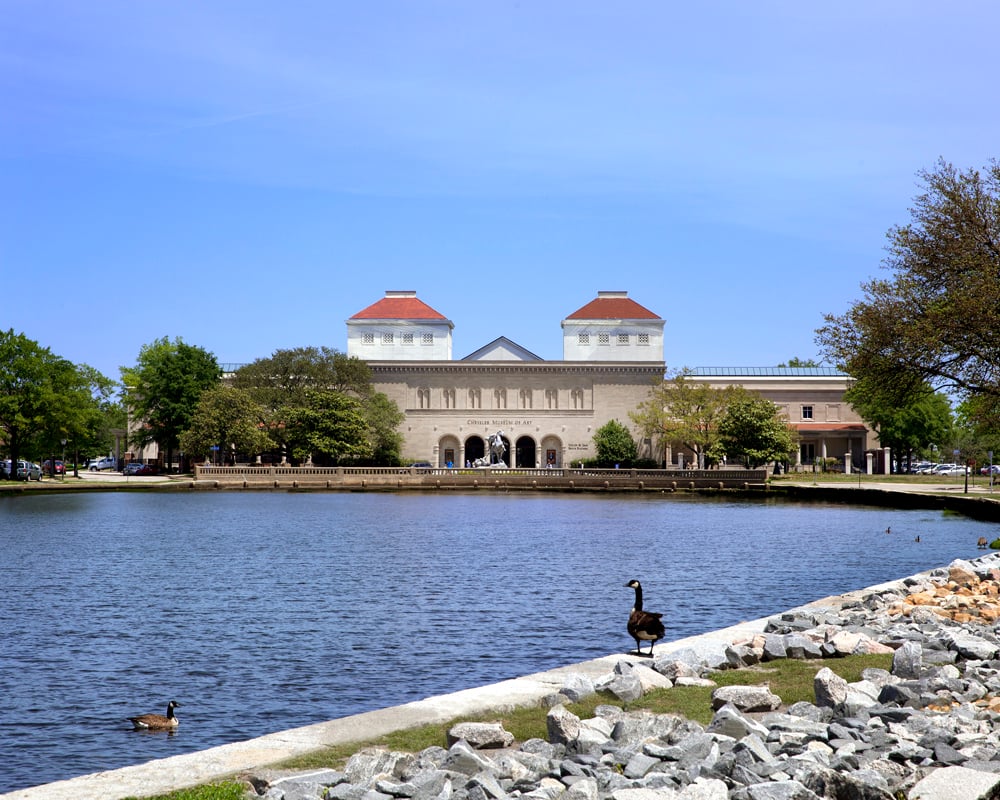
The institution reopened this month with two new wings.

Sarah Cascone

After 16 months of construction, a newly renovated and expanded Chrysler Museum of Art reopened in Norfolk, Virginia, earlier this month. Boasting a newly-flush endowment that allows it to offer free admission to all, and an expansive and encyclopedic collection, the new Chrysler is an exceptionally welcoming institution, eager to engage the with the community but also to participate in the international art scene.
Not many museums have been as lucky as the Chrysler. In 1971, the small, regional institution—still known, since its 1933 founding, as the Norfolk Museum of Arts and Sciences—received a princely gift: the art collection of Walter Chrysler Jr., son of the auto magnate and husband to local girl Jean Esther Outland. Overnight, the museum became home to a world-class art collection, but finding space for all of it has been a challenge ever since.
Despite expansions in 1974 and 1989, museum director Bill Hennessey still had “wonderful things in storage that deserved to be shown—but there weren’t enough walls!” As Hennessey points out, it’s hard to solicit donations when newly acquired works have nowhere to go but a warehouse. The expansion latest project addressed this issue by adding two-story wings to either side of the museum’s palazzo-style entrance, for a total of 10,000 additional square feet of exhibition space.
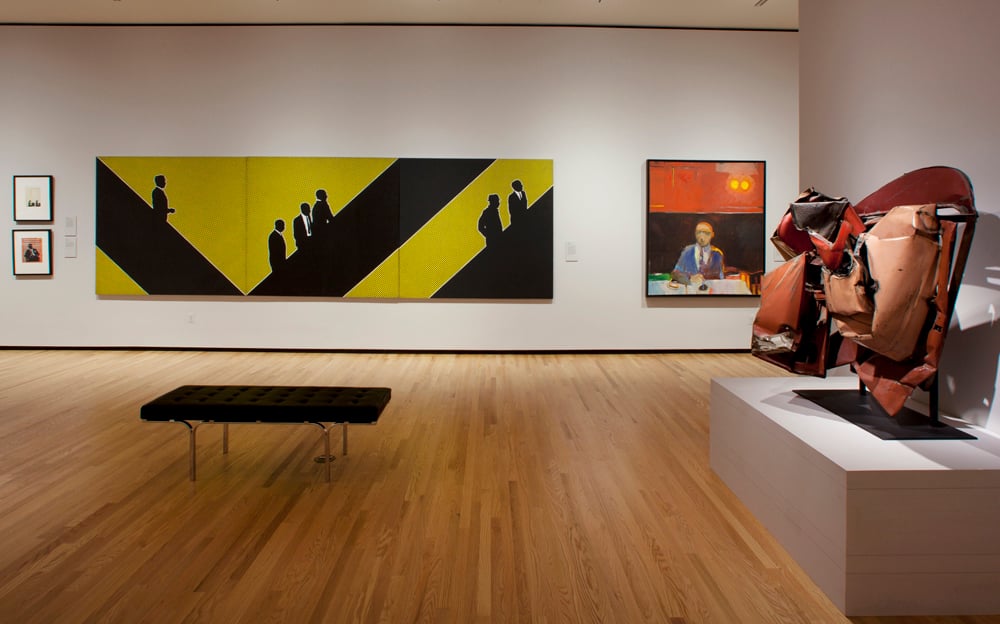
An installation view of a the contemporary and modern art galleries featuring a recent acquisition, Idelle Weber’s Munchkins I, II, & II (1964), and a John Chamberlain Combine, among other works. Photo by Ed Pollard, courtesy of the Chrysler Museum of Art, Norfolk, Virginia.
There was also a significant overhaul of the museum’s existing galleries, which have been completely rehung, incorporating technological advances in lighting, heating, air-conditioning, video, and wireless. The improvements are most conspicuous in the museum’s modern and contemporary galleries, which now boast higher ceilings and movable walls, allowing the space to be reconfigured depending on what’s on view.
Whereas the largest works in the museum’s holdings had previously been much too big for its facilities (the curatorial team likens the experience of trying to see these oversize paintings to craning your neck in the front row of the movie theater), the renovated galleries have higher ceilings and offer better, more comfortable vantage points for appreciating massive works.
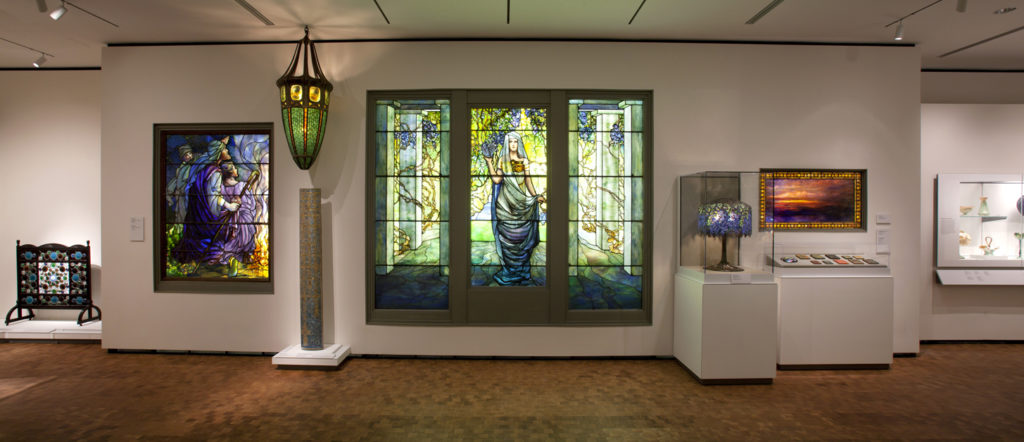
Louis Comfort Tiffany glass. Photo by Ed Pollard, courtesy of the Chrysler Museum of Art, Norfolk, Virginia.
Walter Chrysler had two main passions in his collecting: early European modernism, and glass. He eventually traded many of his modernist works, including hundreds of Picassos, in order to amass a more encyclopedic collection.
He was intent on creating a lasting legacy for the Chrysler name through the museum, and thanks to his extensive glass holdings, the Chrysler has more works in the medium than any other institution in the country, save the Corning Museum of Glass in Corning, New York. Of the 30,000 piece collection, a full third of it is glass, ranging from ancient Egyptian beads to monumental contemporary works.
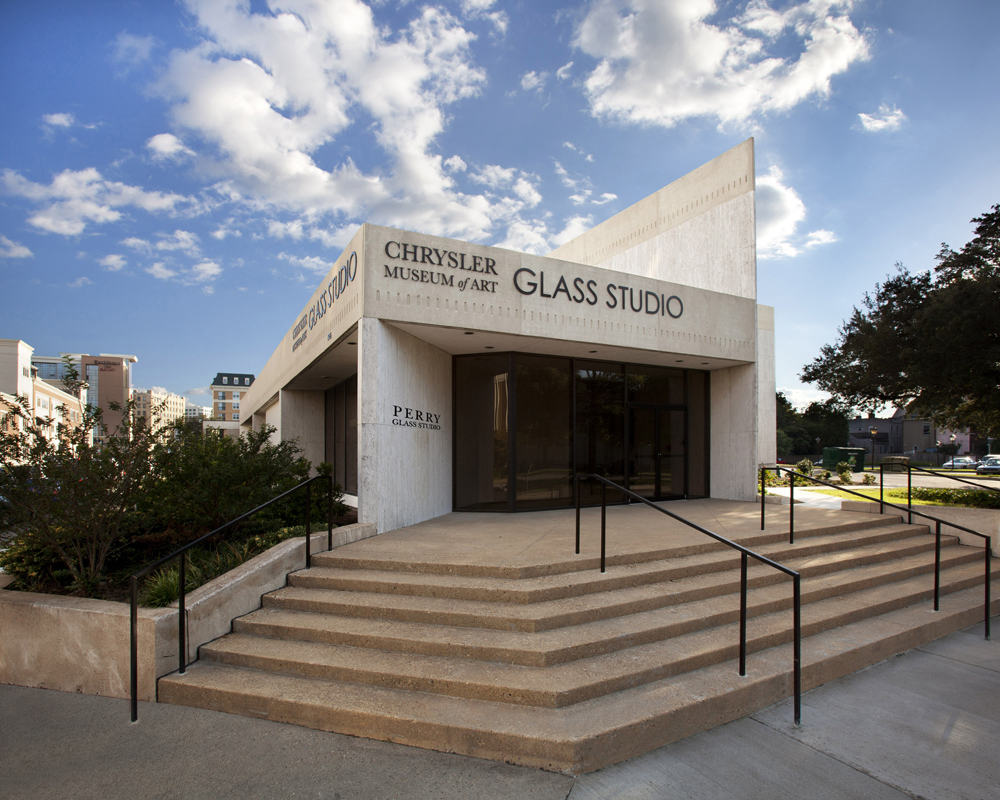
The Chrysler Museum’s glass studio. Photo by Ed Pollard, courtesy of the Chrysler Museum of Art, Norfolk, Virginia.
While the museum was closed, it kept an active presence within the community through its two-year-old Perry Glass Studio, which hosts free daily demonstrations and a number of classes geared toward a wide range of skill levels. A video feed inside the glass galleries streams live action of work in the studio, which encompasses a variety of techniques. The museum is keen on promoting an understanding of glass blowing as a form of performance art, not just as a product-oriented process, which it does through its Third Thursday evening series pairing glass working with live music. Beginning in June, Third Thursday programming will expand to the Chrysler proper, and the entire museum will stay open late.
The museum’s curatorial staff have revamped each of the collection’s major sections: American painting and sculpture, European painting and sculpture, glass, photography, ancient artifacts, and modern and contemporary. The Chrysler’s decorative art holdings are incorporated throughout, rather than being confined to their own area.
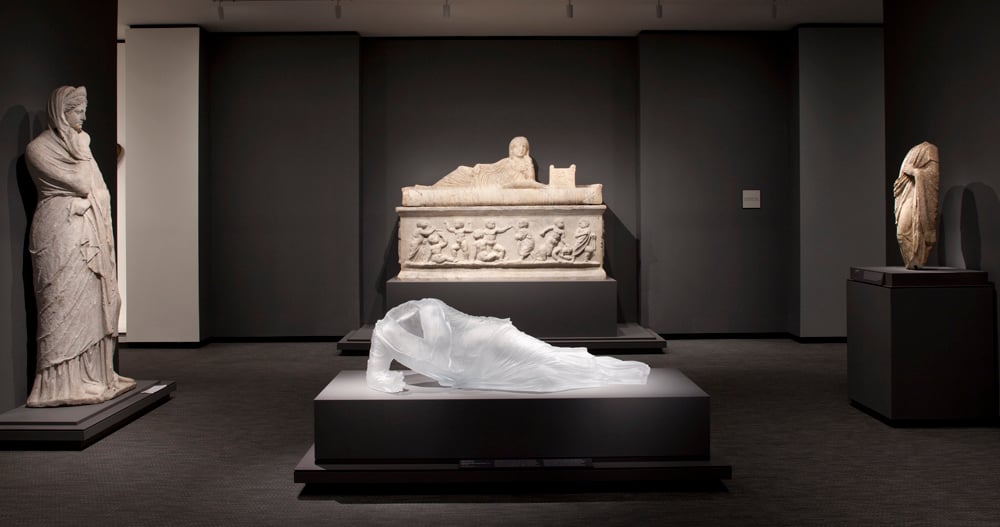
Karen LaMonte, Reclining DressImpression with Drapery (2009), in the ancient worlds gallery. Photo by Ed Pollard, courtesy of the Chrysler Museum of Art, Norfolk, Virginia.
The new hanging plays to the collection’s strengths, with salient pieces from its contemporary holdings installed in galleries devoted to older works. In the ancient galleries, massive marble sculptures, with their trademark draped garments, benefit from the inclusion of a life-size frosted glass cast of a woman in a heavily draped dress by Karen LaMonte from 2009.
In the medieval galleries, portraits by Hans Holbein the Edler and his ilk are paired with two large photo prints from contemporary artist res that draw heavily on medieval portraiture conventions in their compositions and the subjects’ attire.
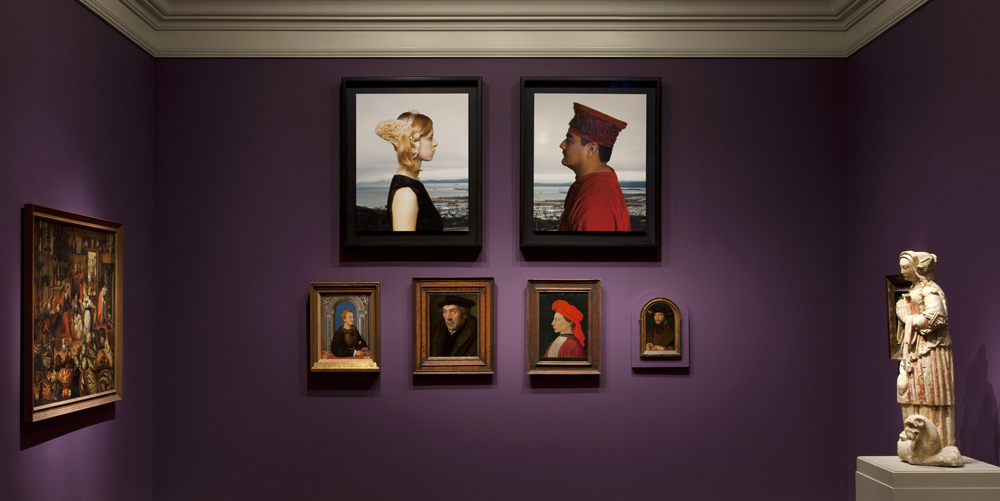
Contemporary photography by res with medieval portraiture. Photo by Ed Pollard, courtesy of the Chrysler Museum of Art, Norfolk, Virginia.
Throughout, artworks are grouped thoughtfully, creating memorable juxtapositions. A particularly chilling combination brings together two takes on the mother-and-child portrait motif: One, Léon-Jean-Bazile Perrault’s The Orphans, shows an adoring young woman cradling a toddler in her arms; the other, Hugues Merle French’s The Lunatic of Étretat, features a wild-eyed gypsy clutching a log she’s outfitted with a baby bonnet. It’s a great pairing of maternal love and unhinged grief. Less engaging is a trio of black paintings in the modern and contemporary galleries by Pierre Soulages, Adam Pendleton, and Jackson Pollock.
In the American galleries, a massive Hudson River School painting by Albert Bierstadt receives a showy presentation. The Emerald Pool (1870) is hung under a red velvet theater curtain. It’s an over-the-top gimmick, but historically accurate to an era when going to see a painting was a popular source of entertainment on par with today’s blockbuster movies. The work, which depicts New Hampshire’s White Mountains, is paired with photographs taken by the artist’s brother, Edward, of the majestic view. His unique stereoscopic book presents a number of scenic New England vistas.
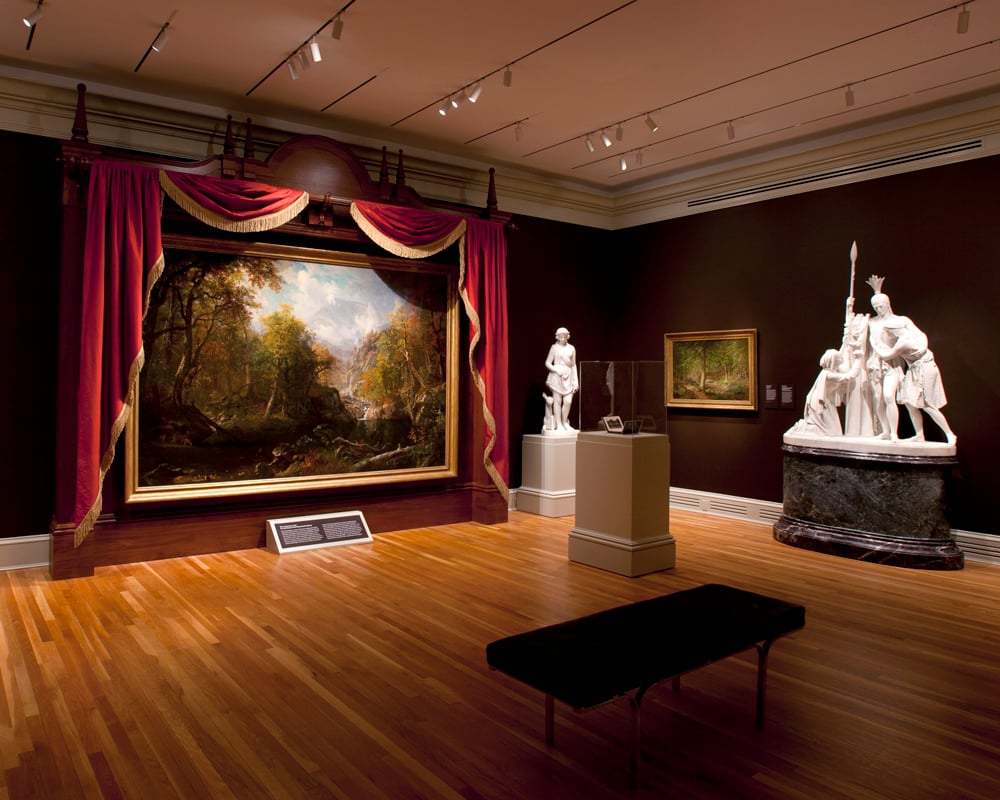
Albert Bierstadt, The Emerald Pool (1870), on display. Photo by Ed Pollard, courtesy of the Chrysler Museum of Art, Norfolk, Virginia.
The museum has also introduced an interactive sound-based iPad app from the education department in a fun spin on the traditional audio guide. The app, not yet available for download, works with several pieces in the collection.
Museum guides will hold an iPad up to a painting or sculpture, and a related piece of music or sound will play, such as a bird song for Winslow Homer’s Song of the Lark (1876), or, for a glass grand harmonicona, a song played on the antiquated instrument.
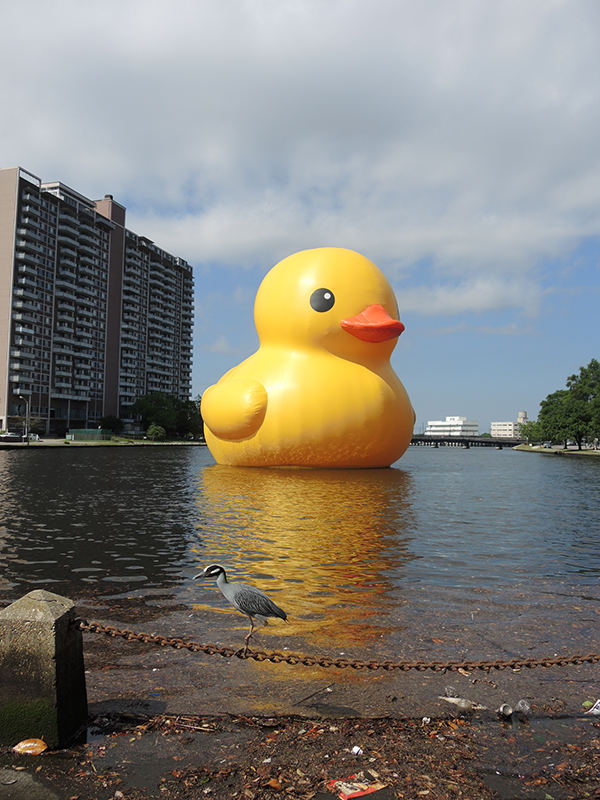
Florentijn Hoffman, Rubber Duck, outside the Chrysler Museum of Art, Norfolk, Virginia. Photo by Sarah Cascone.
The sound art initiative is reflective of the museum’s mission to engage viewers, to encourage them to think about art in new ways, and to make connections across the collection. There’s a lot to see at the Chrysler, an in spite of all its extra space, it remains a manageable, accessible collection that doesn’t daunt or overwhelm.
In many ways, the renovated museum retains the soul of a welcoming small town institution—even after the departure of Florentijn Hoffman‘s Rubber Duck—that can finally showcase the full breadth of Walter Chrysler’s world-class collection.